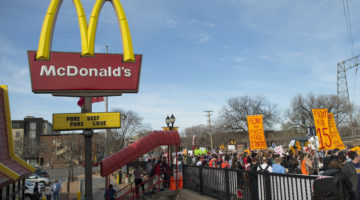For decades, the U.S. government has tried and failed to open a long-term high-level nuclear waste storage facility in a nondescript mountain out in the desert north of Las Vegas. Those efforts have failed in large part because of resistance from Nevadans, and in many ways, this resistance is justified.
For one, it would seem that Eastern states are merely taking their problems and pushing them somewhere else. Nevada has no nuclear power plants of its own, and it seems dubious that we should shoulder responsibility of the waste.
More than that, most Nevadans just don’t want the waste in the first place. A poll from January found that 58 percent of the state opposed restarting the mothballed project. To ask the state’s politicians, especially those representing Las Vegas, to support Yucca Mountain would be to ask for political suicide.
Thus, for the past couple of months, Nevada’s congressional delegation has been caught in a cycle of hemming and hawing as they try (so far in vain) to stop a House vote to jump start the licensing process with an injection of $120 million. That chunk of money is the first real attempt to address the country’s nuclear waste problem since Yucca was last shuttered back in 2009.
Back then, Nevadans, especially former Sen. Harry Reid, rejoiced in calling the effort dead. But if that were ever the case (and we can’t say that it ever really was), it’s certainly alive and well now, and it’s for a simple reason: the U.S. cannot realistically keep ignoring its nuclear waste problem without risking disaster.
These disputes are merely delaying the inevitable decision that must be made. The clock is ticking on the tens of thousands of tons of nuclear waste sitting in short-term facilities around the country. The waste must go somewhere, so why not the Nevada desert?
The possibility of an accident involving transportation of the nuclear waste is unnerving. Transporting anything over railways can be sketchy, but especially scary is the thought of deadly radioactive material heading at high speeds directly toward our state, endangering anyone in its path, from derailments to terrorist attacks.
But even though these concerns are valid and important, they do not negate the fact that the U.S. has a problem safely storing its most dangerous nuclear waste. Incidents like the ones that have plagued the sites at Hanford, Washington (where a tunnel holding high-level waste collapsed) and at Savannah River, South Carolina (which is now among the most contaminated places in the world) will continue to happen if something, anything, is not done.
So we need to seriously entertain the fact that if it’s not Yucca, it has to be somewhere else. Doing nothing is clearly no longer an option.
There’s no easy answer to the debate over Yucca Mountain, and we won’t pretend like we’ve figured out the questions that continue to dominate the conversation. But we can’t continue to sit on our hands. Not when there’s more disaster waiting around the corner.











